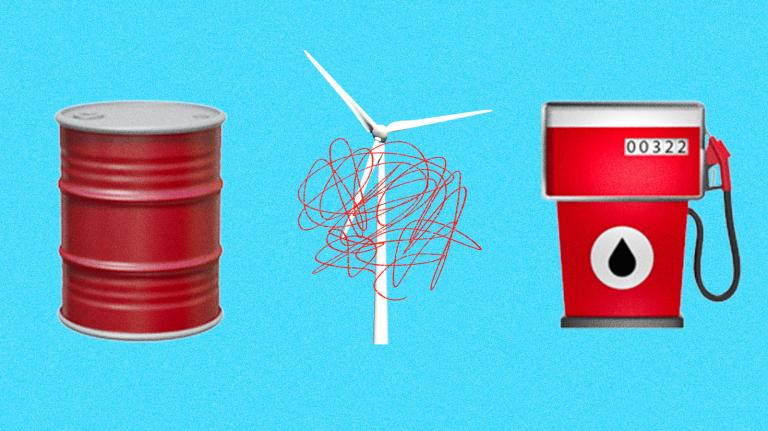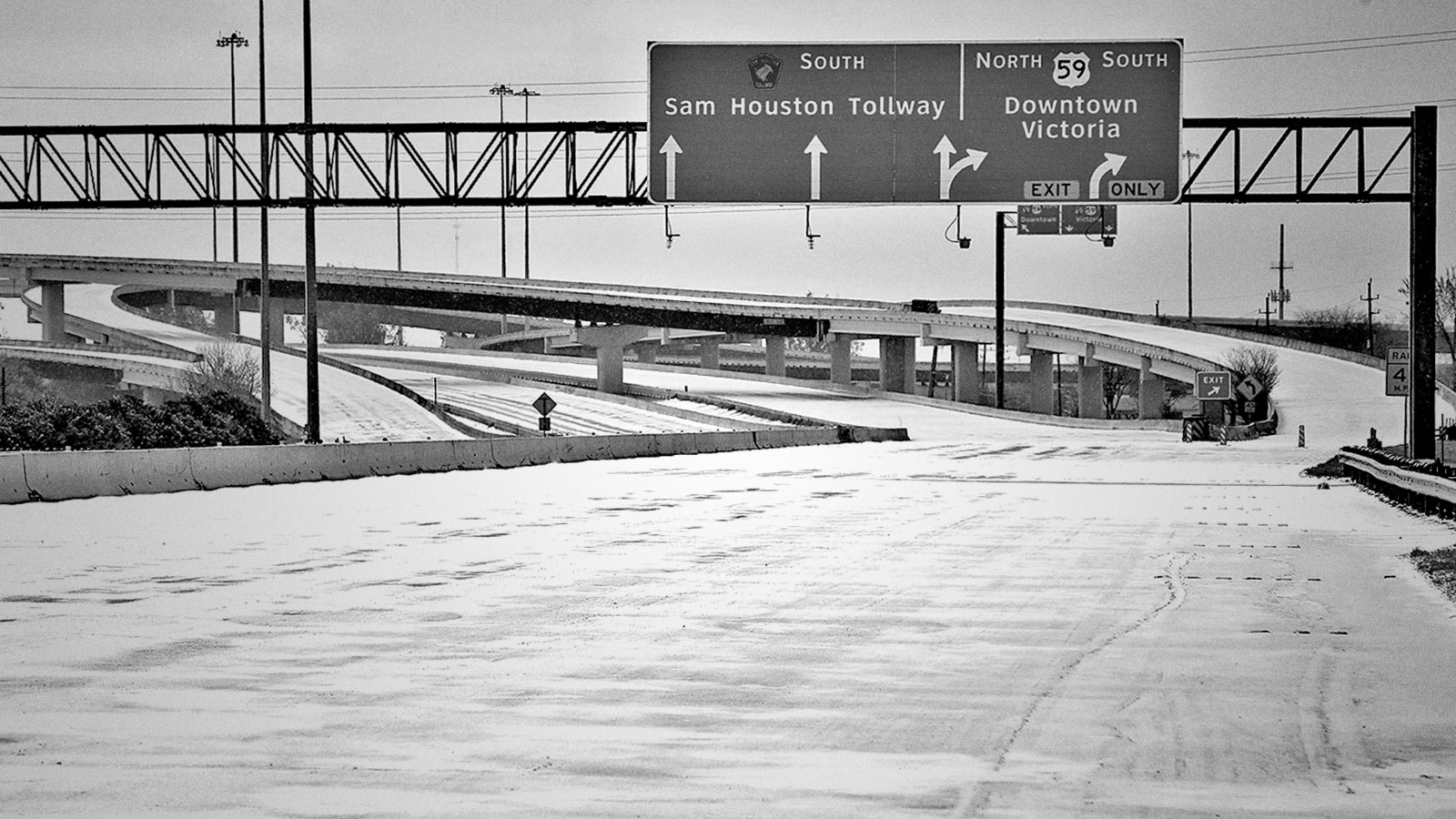On Monday night, every patient that pediatrician Phillip Scott admitted to the Cook Children’s Hospital in Fort Worth, Texas, was suffering from carbon monoxide poisoning. Hundreds of miles south, in Houston, a woman and an 8-year-old girl were found dead on Tuesday from suspected carbon monoxide poisoning, with a man and 7-year-old boy from the same household taken to the hospital in critical condition. On Tuesday, the Houston Fire Department said it had responded to 90 calls for carbon monoxide poisoning in the past 24 hours, and the official number of cases reported in Harris County, which contains most of Houston, surpassed 300.
It was a tragic consequence of the winter storm that brought inches of snow and subfreezing temperatures to a state that rarely sees either. As temperatures dipped below freezing on Monday throughout Texas, unplanned power outages left more than 4 million households and businesses without electricity. Desperate families began turning to car heaters, generators, and charcoal grills for warmth, causing dangerous quantities of carbon monoxide to accumulate inside their homes. Others died directly from the cold.
The energy crisis in Texas underscores the deadly risks communities face when the grid goes down, which will happen more often as the occurrence of extreme weather events increases due to climate change.
“This is another enormous example of an environmental justice issue,” said Emily Grubert, a social scientist and engineer at Georgia Tech who studies electricity systems. “This is not the last time we’re going to have an event like this, whether it’s cold, heat, hurricanes, whatever. We really need to make sure that people have somewhere safe to be when this kind of thing happens.”
It’s not yet clear whether climate change played a role in forming the blanket of cold air wrapped around the central and southern United States this week. On average, winters are getting warmer in Texas and everywhere else. But some researchers say warming in the Arctic can weaken the polar vortex, a mass of rotating, freezing air that usually hovers over the North Pole, causing it to shed pieces of itself and send pockets of cold air rolling across the globe. The cold in Texas is one of those shards of icy air.
“Severe winter weather is much more frequent when the Arctic is warmest,” Judah Cohen, the director of seasonal forecasting at climate and weather-related risk company Atmospheric and Environmental Research, told the New York Times this week. “It’s not in spite of climate change, but related to climate change.” Still, other researchers say the link between warming Arctic temperatures and a volatile polar vortex isn’t clear.
What is clear is that Texas’ electricity providers were not prepared for the cold. According to the Electric Reliability Council of Texas, the nonprofit organization that operates 90 percent of the state’s power grid, the widespread power outages were primarily caused by natural gas supply shortages and frozen equipment at power plants.
Joshua Rhodes, a research fellow at the University of Texas at Austin who studies the electricity system, said the cold temperatures created unexpected competition for natural gas. The 60 percent of Texan households with electric heating (most of whom have highly inefficient electric resistance systems rather than heat pumps) upped the demand for electricity, and more than half of Texas’ winter electricity supply comes from natural gas power plants. But the remaining 40 percent of households with natural gas heating were also cranking up their thermostats, and in Texas, homes get priority access to the fuel. “So while they’re getting as much gas as the system can deliver, power plants are having trouble.”
Looking ahead, Rhodes said electricity planners should not jump to the conclusion that this means Texas needs more gas in the system or more gas pipelines. He said the best next step is to put these types of weather conditions into grid planning models that are designed to find the lowest-cost way to meet demand and see what they come up with. “I imagine there will be more storage, more transmission, more power plant capacity overall,” he said.
He also pointed out that other parts of the country experiencing the unprecedented cold front have electricity to spare — they just can’t deliver it to the Texas grid, which is currently an island. Linking Texas’ grid up with the rest of the country via high voltage power lines, as renewable energy researchers have proposed, may not prevent outages altogether, but it might reduce them. “Maybe we could do rolling outages for people only for 15 minutes at a time versus, like, my house in Austin, which has been out since 2 a.m. Monday,” Rhodes said.
Grubert said that for her, the main takeaway from the disaster in Texas is that we need to make sure we can manage situations when the grid is down. In addition to leaving residents vulnerable to the cold, the outages also shut down water treatment plants, forcing cities to issue warnings to residents to boil their water to be safe. Some utilities shut off water service altogether.
Moving forward, extreme weather will not be the only strain on the grid, Grubert said. Technologies designed to fight climate change will create new challenges. Electrification of home heating will expand winter power demand during a time when renewable resources like solar power are less available. “There’s never going to be the opportunity to plan for every single event that might possibly happen on the grid side,” she said. “So if we can design systems where you’re at least safe, even if you are going to be out of power for a while, that’s probably going to be something that becomes much more important.”
In practice, that means focusing on demand-side solutions, like making sure buildings are well insulated. Improving insulation not only lowers demand and energy bills but can protect people from extreme heat and cold if the power goes out. Grubert said it also means ensuring there are warming centers and cooling centers people can access, and having a plan to evacuate people if necessary.
Safety isn’t just a matter of temperature. Extreme weather events can also cause dangerous levels of localized pollution. As temperatures dropped over the weekend, the Texas Commission on Environmental Quality, or TCEQ, suspended air quality rules for refineries and other polluting facilities. The low temperatures caused equipment to malfunction, resulting in the release of more than 300,000 pounds of pollutants, according to TCEQ data. That includes more than 20,000 pounds of nitrogen oxides, 700 pounds of benzene, and 44,000 pounds of sulfur dioxide, to name just a few of the harmful chemicals and gases emitted. The excess pollution underscores the need to reduce demand for fossil fuels — not only to address climate change, but to decrease risks to public health.
Whether it’s having a poorly insulated home, a home located next to a refinery, or no house at all, extreme weather events disproportionately harm the most vulnerable members of society, particularly Black and brown communities affected by racist housing policies. What happened in Texas is a reminder that adapting to climate change is just as urgent as slowing it down.
Zoya Teirstein and Naveena Sadasivam contributed reporting to this story.




